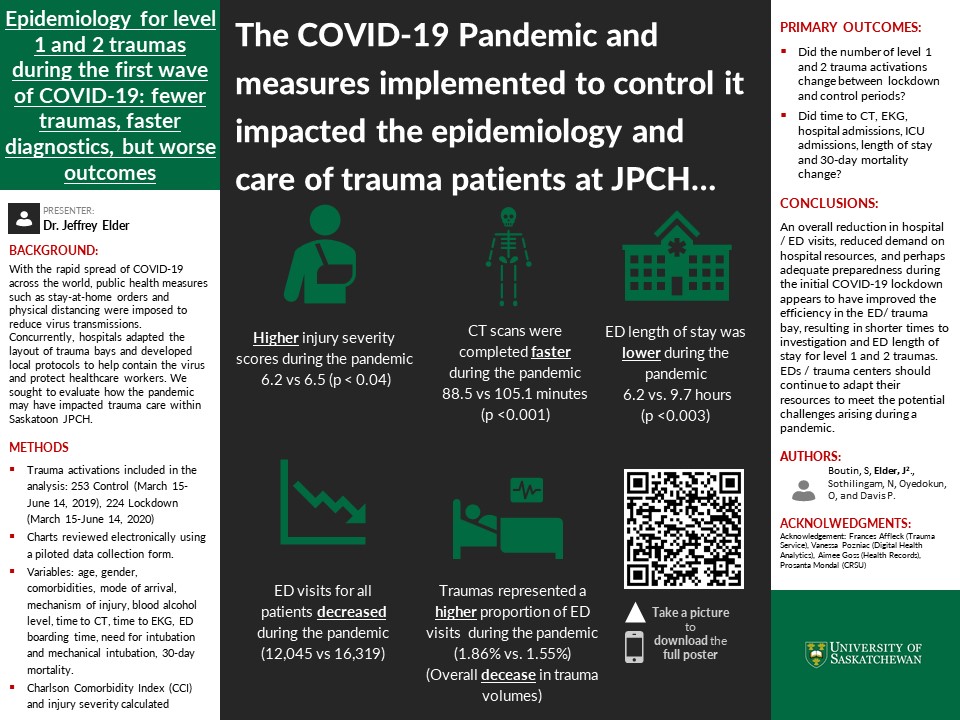
A1.8: Epidemiology for level 1 and 2 traumas during the first wave of COVID-19: fewer traumas, faster diagnostics, but worse outcomes
Savanna Boutin, Jeffrey Elder, P. Davis, N. Sothilingham, O. Oyedokun
Objectives: Determine if physical distancing and lockdown measures imposed during the first wave of the COVID-19 pandemic had any impact on level 1 and 2 trauma team activations, outcomes, and injury patterns at a western Canadian level 1 trauma center.
Methods: We performed a chart review on a historical cohort of patients presenting to our level 1 trauma center during the initial COVID “lockdown” period (March 15 – June 14, 2020) and a similar cohort of patients during the “control” period one year prior (March 15 – June 14, 2019). We assessed the number of level 1 and 2 trauma activations during the control and lockdown periods. Our outcomes of interest were time to x-rays, CT, and ECG, hospital (including ICU) admission, ED and Hospital lengths of stay, 30-day mortality, and demographic data.
Results: 224 level 1 and 2 traumas presented to our centre during the lockdown period compared to 243 trauma activations during the control period, representing a 7.8% reduction. Times to investigations of interest (X-rays, CT, ECG) were shorter during lockdown. While patients were mostly males, there was no statistically significant difference between the 2 cohorts.
The most significant findings were: Shorter average ED length of stay of 6.17hr during the lockdown compared to 9.65hr in the control group; higher 30-day mortality of 12(5.5%) vs 5(2%); and higher ISS. We also saw an increase in the percentage of penetrating injuries. Conclusions: An overall reduction in hospital / ED visits, reduced demand on hospital resources, and perhaps adequate preparedness during the initial COVID-19 lockdown appears to have improved the efficiency in the ED/ trauma bay, resulting in shorter times to investigation and ED length of stay for level 1 and 2 traumas. Trauma centers should continue to adapt their resources to meet the potential challenges arising during a pandemic.
